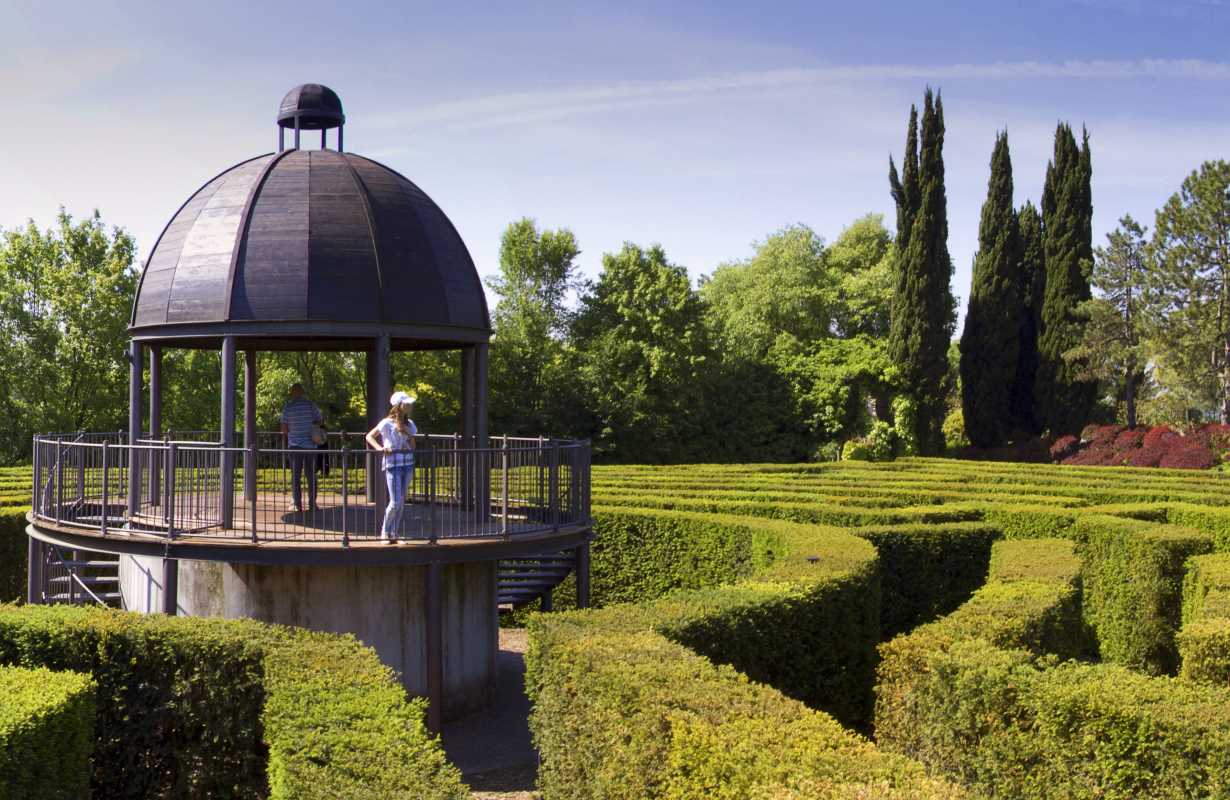Garden mazes have long been symbols of mystery, elegance, and artistry. These intricate landscapes, designed to puzzle and delight visitors, offer more than just a test of navigation—they provide immersive experiences that combine nature, design, and history. From ancient hedge labyrinths to modern-day masterpieces, garden mazes worldwide continue to captivate and inspire.
A Brief History of Garden Mazes
The concept of mazes dates back thousands of years, with the earliest known examples found in mythology. The Labyrinth of Crete, famously home to the Minotaur in Greek legend, inspired the creation of hedge mazes during the Renaissance. These mazes became popular features in European gardens, showcasing wealth and sophistication.
Today, garden mazes range from traditional hedge labyrinths to creative designs made of flowers, corn, or even mirrors. They are found in diverse settings, from historic estates to theme parks, attracting visitors of all ages.
Longleat Hedge Maze (England)
One of the most famous mazes in the world, the Longleat Hedge Maze in Wiltshire, England, spans nearly 1.7 miles of pathways. Designed in 1975, this maze features over 16,000 English yew trees, forming a challenging yet visually stunning labyrinth.
The Longleat Maze's unique design is its three-dimensional design. Visitors must navigate bridges and elevated pathways, adding an extra layer of complexity. Located on the grounds of the Longleat Estate, the maze offers breathtaking views of the surrounding gardens and historic mansion.
Château de Villandry Maze (France)
The Château de Villandry, located in the Loire Valley of France, is renowned for its exquisite Renaissance gardens, including a beautifully designed maze. This elegant creation features meticulously trimmed boxwood hedges arranged in geometric patterns.
Unlike mazes meant to bewilder, the Villandry Maze is designed to symbolize harmony and enlightenment. At the center stands a raised gazebo, offering visitors a vantage point to admire the maze’s symmetrical beauty. The surrounding gardens, including ornamental and water features, add to the serene atmosphere.
Dole Plantation Pineapple Garden Maze (Hawaii, USA)
For a tropical twist, the Pineapple Garden Maze at Hawaii’s Dole Plantation offers a vibrant and fragrant adventure. This colorful maze, shaped like a giant pineapple, covers three acres and features over 14,000 plants.
Visitors are challenged to locate eight hidden stations within the maze, each representing a part of Hawaiian history or culture. The experience combines fun and education, making it a hit with families and tourists.
Ashcombe Maze and Lavender Gardens (Australia)
Located on the Mornington Peninsula in Victoria, Australia, the Ashcombe Maze and Lavender Gardens is one of the oldest and most picturesque hedge mazes in the Southern Hemisphere. Its lush cypress hedges stand over three meters high, providing a delightful challenge for visitors.
Beyond the hedge maze, the site features a fragrant lavender labyrinth and a rose maze with over 1,200 varieties of roses. Combining floral scents and vibrant colors creates a sensory feast for maze enthusiasts.
Reignac-sur-Indre Maze (France)
The Reignac-sur-Indre Maze, located in the heart of the Loire Valley, is the largest plant maze in the world. This seasonal maze is made from sunflowers and maize and offers a different design each year.
The maze, which spans an impressive 10 hectares, attracts thousands of visitors annually. Its temporary nature adds an element of anticipation, as visitors can never predict the pattern of the upcoming season’s design.
Masone Labyrinth (Italy)
The Masone Labyrinth, situated near Parma, Italy, is a modern masterpiece and the world’s largest permanent maze. Designed by architect Franco Maria Ricci, this bamboo labyrinth covers eight hectares and includes a cultural center, library, and museum.
Unlike traditional hedge mazes, the Masone Labyrinth’s walls are made entirely of bamboo, creating a unique and eco-friendly aesthetic. Inspired by Roman mosaics, the maze's design combines ancient influences with contemporary innovation.
Hampton Court Palace Maze (England)
No list of amazing garden mazes would be complete without mentioning the Hampton Court Palace Maze just outside London. Planted in the late 17th century, it is the oldest hedge maze in England.
This trapezoidal maze, made of hornbeam trees, has puzzled visitors for centuries. Its winding paths, dead ends, and unexpected twists make it a challenging and rewarding experience. The maze’s historic charm and connection to the royal estate enhance its appeal.
Maze Garden at Schönbrunn Palace (Austria)
The Maze Garden at Schönbrunn Palace in Vienna, Austria, offers a delightful escape for visitors to the imperial grounds. Originally created in the late 17th century, this maze was reconstructed in the 1990s to preserve its historical significance. The maze features low hedges, allowing a clear view of the Baroque gardens. Interactive elements, such as climbing frames and musical stones, make the experience enjoyable for families and children.
The Magic of Garden Mazes
Their ability to transport visitors into a world of whimsy and wonder makes garden mazes so enchanting. Navigating a maze offers a sense of adventure and accomplishment, whether you’re a casual explorer or a dedicated maze enthusiast.
Garden mazes also celebrate nature and design. They require meticulous planning and maintenance and often reflect the creativity and vision of their creators. Combining artistry and horticulture results in spaces that are as much about aesthetics as they are about fun.







